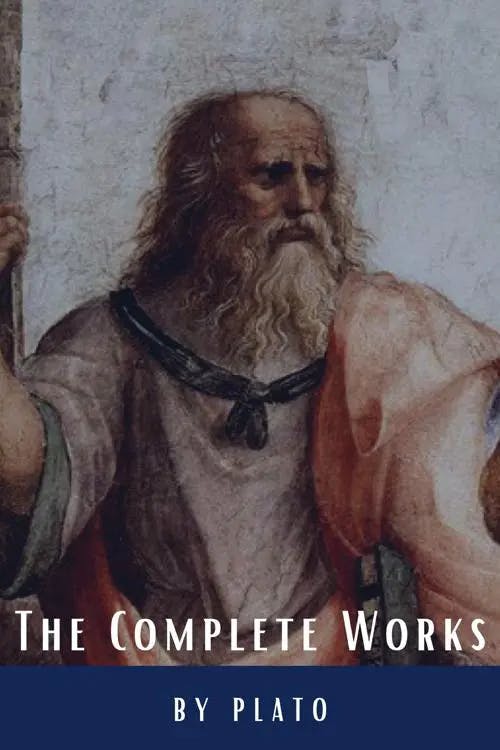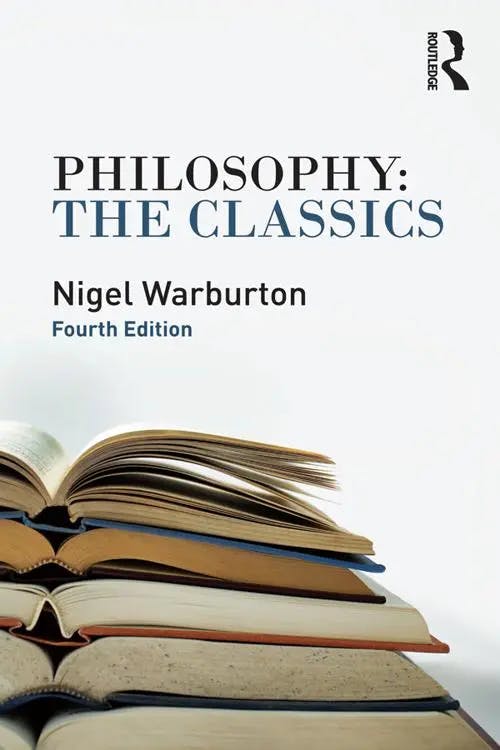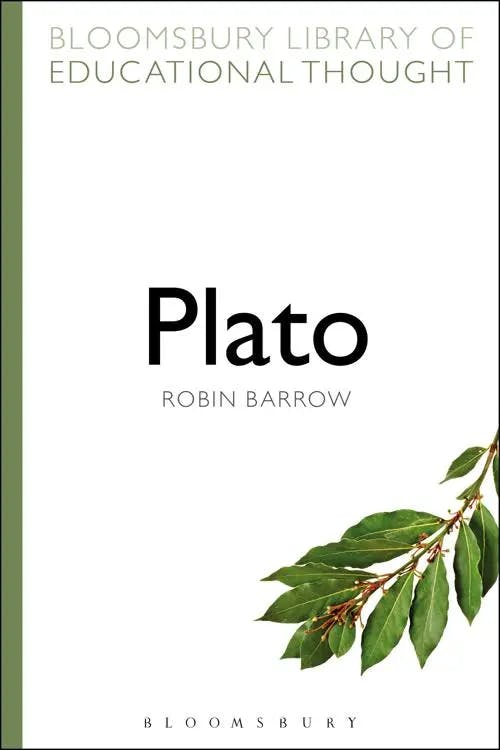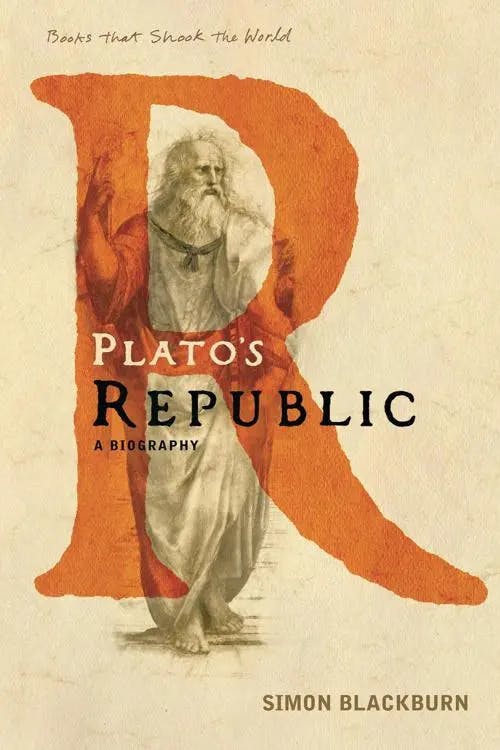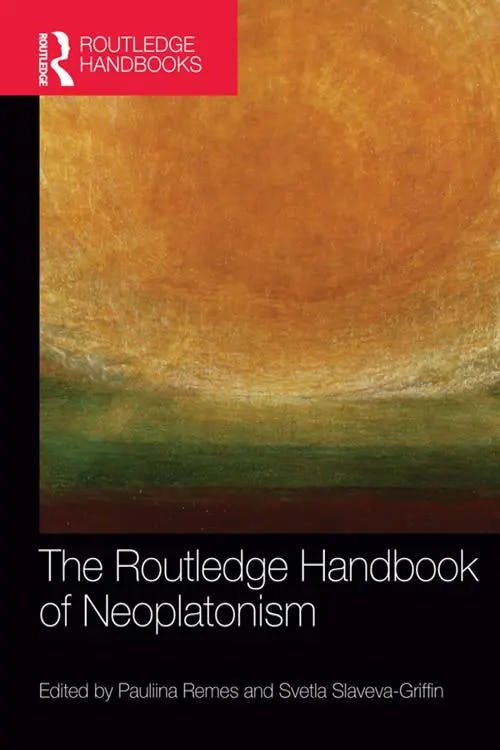What is Plato's Theory of Forms?
MA, English Literature (University College London)
Date Published: 14.03.2023,
Last Updated: 21.12.2023
Share this article
Defining Plato’s theory of Forms
One of the most influential strands of Plato’s thought is his theory of Forms. It has become so emblematic, in fact, that ‘[W]hen people speak of Platonism they usually mean this aspect of his work’ (Warburton, 2014). Plato theorised that perfect Forms (or Ideas) exist beyond the empirical world of our senses, and that these Forms act as the blueprint for the imperfect copies we can see in our reality. In essence, Plato’s theory of Forms seeks to identify the source of ‘true’ knowledge.
Unpacking Plato’s theory of Forms
[T]here is one kind of being which is always the same, uncreated and indestructible, never receiving anything into itself from without, nor itself going out to any other, but invisible and imperceptible by any sense, and of which the contemplation is granted to intelligence only. (Plato, Plato: The Complete Works, 399–347 BCE [2021])
Plato, Classics HQ, Benjamin Jowett
[T]here is one kind of being which is always the same, uncreated and indestructible, never receiving anything into itself from without, nor itself going out to any other, but invisible and imperceptible by any sense, and of which the contemplation is granted to intelligence only. (Plato, Plato: The Complete Works, 399–347 BCE [2021])
Plato does not create a definitive, systematic theory of the Forms in his writing. Instead, spread throughout various dialogues, his conceptualisation of the Forms is often vague, inconsistent, and open to interpretation. Frequently, the Forms are employed as a buttress to support his arguments on other topics.
As outlined in Andrew Mason’s Plato (2014),
[M]ore often, it [the subject of Forms] appears as part of the background to his thought on other subjects, such as the immortality of the soul (in the Phaedo), love (in the Symposium and Phaedrus), ethics and politics (in the Republic), and cosmology (in the Timaeus).
Andrew Mason
[M]ore often, it [the subject of Forms] appears as part of the background to his thought on other subjects, such as the immortality of the soul (in the Phaedo), love (in the Symposium and Phaedrus), ethics and politics (in the Republic), and cosmology (in the Timaeus).
(All of the above dialogues can be found in Plato: The Complete Works (399–347 BCE [2021]), the edition I will be referencing throughout.)
In order to cut our way through this conceptual jungle, it is best to approach Plato’s theory of Forms step by step:
- There are eternal, unchanging, perfect Forms. These Forms are abstract; existing in a realm that lies beyond time and space.
- When creating the physical universe, ‘God’ used these eternal Forms as a blueprint; shaping imperfect matter into their likeness. These creations were made to be ‘as far as possible the fairest and best, out of things which were not fair and good’.
- What we apprehend in the empirical world is therefore an imperfect copy of its perfect, abstract counterpart. In some respects these copies participate in their perfect Forms, but they always ‘fall short’.
- Our eternal souls were acquainted with these Forms before birth, and so we are reminded of them when we see their imperfect copies around us. Through the help of reason, we are able to approach a closer knowledge (or recollection) of the Forms themselves.
- Unlike the transient matter of our world, the eternal Forms are immutable – and so they are the only sources of true knowledge. Because philosophers have the greatest grasp of this true knowledge through their study of the Forms, they are best placed to guide (and rule over) society.
For Plato, then, the Forms are not confined to our mind. They are not merely a mental framework of universal concepts. Plato instead constructs a metaphysical theory – conceiving of a world of Forms which, although outside of time and space, is very much real. Our world, and everything in it, is regarded as no more than a shadow of this greater reality of the Forms. Famously, Plato uses his Allegory of the Cave to illustrate this point: with the cave representing the illusory world of the senses we are confined to, and the bright world outside the cave representing the true reality of the Forms.
In short, then, Plato posits ‘two sorts of existences—one seen, the other unseen.’ But how are we meant to perceive these Forms if they are ‘unseen’? Can our senses ever apprehend them? Plato explores this subject in detail:
- The Forms are ‘self-existent ideas unperceived by sense, and apprehended only by the mind’. We are reminded of them when we see the shadowy representations of them in our reality, but we cannot ever gain true knowledge of these Forms through our senses – as we would be gaining knowledge of lesser forms, removed from their true essence.
- When we use our body’s senses to perceive reality, we are misled. We are ‘dragged by the body into the region of the changeable’ – into the lesser reality of the senses, rather than true knowledge of the Forms themselves. We then become ‘confused’, ‘like a drunkard’. The danger of following the body, Plato argues, is that we are ‘led to believe that the truth only exists in a bodily form, which a man may touch and see and taste’.
- In order to truly apprehend the Forms, then, we must use our reason: ‘the things themselves [...] can only be seen with the eye of the Mind’.
In a wider sense, it is arguable that we each approach something close to a consideration of Plato’s Forms each day, without our knowledge. It is there, for example, when we describe something as ‘ideal’ or, alternatively, ‘not ideal’. What is the ‘ideal’ that we are comparing the subject to? Where does it reside? Are we imagining the perfect Form of an object or circumstance when we say that it is ‘not ideal’?
Plato’s theory of Forms: everyday examples
In order to more fully explicate Plato’s theory of Forms, and put its abstract principles into practice, it is helpful to look at some everyday examples.
In A Little History of Philosophy (2011), Nigel Warburton uses the classic example of a circle:
Think of all the circles that you have seen in your life. Was any one of them a perfect circle? No. Not one of them was absolutely perfect. In a perfect circle every point on its circumference is exactly the same distance from the centre point. Real circles never quite achieve this. But you understood what I meant when I used the words “perfect circle”.
As Warburton explains, we can all conceptualise a perfect circle, even though we have never actually seen one. All the circles we have ever seen, mathematically speaking, are not quite perfect – each point of their circumference is never quite equidistant from the centre. The perfect circle, then, only exists as an abstract – as the perfect Form of a circle. We have only ever seen imperfect copies of it, and yet we are able to hold the Form of the perfect circle in our minds.
Similarly, to take the example of an everyday object, we all may have the idea of a chair in our minds. This chair may look different to each of us – for some it might be their favourite plush armchair, while for others it may be a more rickety example (such as the one famously painted by Van Gogh). But whatever the size, shape, or colour, we would recognise each as a chair – as participating, in some way, in the essence of what it means to be a chair. When we are thinking in this way, Plato would argue, our mind is grasping for the perfect Form of the chair.
The circles and chairs of our world may seem to belong to the highest order of reality, but in Plato’s mind they are less truly real than their perfect Form. The forms of our world are temporary, changeable, and the subject of opinion rather than knowledge.
We may disagree, and think that the chair we sit on can be the subject of true knowledge, but Plato asks us to always remember that it is only ‘an image, since the reality, after which it is modelled, does not belong to it, and it exists ever as the fleeting shadow of some other’.
The Forms of higher concepts
[T]here is an absolute beauty, and goodness, and an absolute essence of all things. (Plato, 399–347 BCE [2021])
Examples of everyday objects may help us grasp the theory, but Plato’s principal concern was with the Forms of loftier concepts – such as ‘beauty, goodness, justice, holiness’. In Plato’s view,
Great things become great, because they partake of greatness; and [...] just and beautiful things become just and beautiful, because they partake of justice and beauty. (399–347 BCE [2021])
There may be examples of beauty, justice, and goodness in our world, but Plato would argue that they never reach perfection. We are always holding abstract ideals in our minds as we assess the lesser manifestations of beauty, justice, and goodness around us – always comparing the imperfect copy to the perfect Form.
In order to gain true knowledge of justice, beauty, and goodness – and in order to apply this knowledge to the benefit of society – philosophers must always pursue the absolute, perfect Form of these concepts in their reasoning. The greatest of all these Forms is the Form of the Good, which is the source and cause of all the other Forms – as well as the means by which we are able to know them.
Plato famously symbolises this Form of the Good as the sun in his Allegory of the Cave – it shines over every other Form below, lighting them up for our vision, and giving them life. As Nigel Warburton explains in Philosophy: The Classics (2014):
It is the Good which is the ultimate focus of philosophers’ quest for knowledge. He [Plato] uses the simile of the sun to explain this idea. The sun makes sight possible and is the source of growth; the Form of the Good allows the mind’s eye to ‘see’ and understand the nature of reality. Without the illumination provided by the Form of the Good, we are condemned to live in a twilight world of appearance and opinion; in the light of the Good we can glean knowledge of how to live.
Nigel Warburton
It is the Good which is the ultimate focus of philosophers’ quest for knowledge. He [Plato] uses the simile of the sun to explain this idea. The sun makes sight possible and is the source of growth; the Form of the Good allows the mind’s eye to ‘see’ and understand the nature of reality. Without the illumination provided by the Form of the Good, we are condemned to live in a twilight world of appearance and opinion; in the light of the Good we can glean knowledge of how to live.
Criticism of Plato’s theory of Forms
Even in his own time, Plato’s theory of Forms was seen as ‘distinctive and controversial [...] Plato thought that his position was worth defending, and others thought it worth attacking’ (Mason, 2014). Plato continually modified his theory, and he even dedicates space to arguments against his theory in the Parmenides.
One of the key criticisms levelled at the theory in the Parmenides is that of infinite regression: that in order to compare one thing with its Form, reference must be made to yet another Form in order to make the comparison – and so on, to infinitude. Aristotle notably references this argument in The Metaphysics (2017), where he uses the example of a man to illustrate his point (this later became known as the third man argument).
One of the primary strands of criticism against Plato’s theory of Forms is the question of empiricism: how can Plato reject the reality of the senses in favour of a supersensory world for which (by definition) there can be no empirical evidence? In Robin Barrow’s Plato (2014), Barrow summarises the case in favour of empirical reality,
While it may be true that our senses and appearance can deceive us and that things change over time, the physical world is still manifestly the real world, and the positing of an ideal world is more or less unintelligible.
Robin Barrow, Richard Bailey
While it may be true that our senses and appearance can deceive us and that things change over time, the physical world is still manifestly the real world, and the positing of an ideal world is more or less unintelligible.
Without its metaphysical elements, the theory of Forms would become (ironically) a shadow of itself. Arguably, it would be reduced to nothing more than a metaphor for universal ideas. The arguments that Plato uses his theory of Forms to justify would also be weakened – such as his argument for the existence of the soul (based on the principle of its knowledge of the eternal Forms before birth), and his argument for societal rule by philosopher-kings (predicated on the true knowledge they are meant to have gained through their contemplation of the eternal Forms).
Supporters of Plato’s metaphysics might argue, on the other hand, that there is no way to actually disprove the concept of a transcendental world. It is difficult to prove the absence of something, after all – especially if that something lies outside of the empirical means to measure it. Equally, Plato’s critics might argue that the burden of proof lies with Plato and his supporters, and that extraordinary claims require extraordinary evidence.
The legacy and influence of Plato’s theory of Forms
Plato’s theory of Forms, with its metaphysical conceptualisation of a transcendental world overseen by a supreme Form of the Good, has left an indelible mark on Western philosophy and many of the world’s religions – particularly Christianity. Neoplatonism grew into a significant philosophical movement, notably influencing early Christian thinkers such as Augustine of Hippo, for example.
In Plato’s Republic: A Biography (A Book that Shook the World) (2012), Simon Blackburn argues that the theory of Forms played a crucial role in the thought of Philo Judaeus, who ‘is pivotal in the assimilation of Platonism and Christianity, and not only Christianity but Judaism and later Islam’:
For Philo, God is almost totally unknowable [...] The relation between human beings and God therefore needs mediation, and here logos or the Word functions as the intermediary, parallel to Plato’s world of Forms or archetypes, allowing the adept at least an ascent towards the inaccessible pinnacle of unity with God.
Simon Blackburn
For Philo, God is almost totally unknowable [...] The relation between human beings and God therefore needs mediation, and here logos or the Word functions as the intermediary, parallel to Plato’s world of Forms or archetypes, allowing the adept at least an ascent towards the inaccessible pinnacle of unity with God.
The theory of Forms in this sense, then, is employed as a mediator between our empirical realm and the ineffability of God.
The Form of the Good, in particular, is comparable to common conceptions of a monotheistic ‘God’ or ‘One’ – the cause of all things, and the source of all goodness. As Dermot Moran points out in The Routledge Handbook of Neoplatonism (2014):
The One overflows because of its own infinite, superabundant goodness and generosity. In this sense, it is identified with the Platonic form of the Good (to agathon) as found in Plato’s Republic. The Christians would interpret this superabundance as equivalent to boundless love.
Svetla Slaveva-Griffin, Pauliina Remes
The One overflows because of its own infinite, superabundant goodness and generosity. In this sense, it is identified with the Platonic form of the Good (to agathon) as found in Plato’s Republic. The Christians would interpret this superabundance as equivalent to boundless love.
Even today, many would argue that Plato’s theory of the Forms retains its relevance in metaphysical debates concerning the nature of reality: is the empirical realm of the senses all that exists, or is there another level of reality that lies beyond our senses?
What is Plato’s theory of Forms in simple terms?
Who is Plato?
Where does Plato write about his theory of Forms?
When did Plato write about his theory of Forms?
Further Plato reading on Perlego
Feibleman, J. K. (2013) Religious Platonism. 1st edn. Taylor and Francis. Available at: https://www.perlego.com/book/1674819/religious-platonism-the-influence-of-religion-on-plato-and-the-influence-of-plato-on-religion-pdf
Jordan, R. W. (2020) Plato’s Arguments for Forms. Cambridge Philological Society. Available at: https://www.perlego.com/book/3202633/platos-arguments-for-forms-pdf
Pappas, N. (2013) The Routledge Guidebook to Plato’s Republic. 1st edn. Taylor and Francis. Available at: https://www.perlego.com/book/1623867/the-routledge-guidebook-to-platos-republic-pdf
Press, A. Gerald, ed., (2015) The Bloomsbury Companion to Plato. 1st edn. Bloomsbury Publishing. Available at: https://www.perlego.com/book/394548/the-bloomsbury-companion-to-plato-pdf
Reshotko, N. (2022) Opining Beauty Itself. State University of New York Press. Available at: https://www.perlego.com/book/3450169/opining-beauty-itself-the-ordinary-person-and-platos-forms-pdf
Taylor, A. (2022) The Mind of Plato. Barakaldo Books. Available at: https://www.perlego.com/book/3545339/the-mind-of-plato-pdf
Bibliography
Primary text:
Plato. (2021) Plato: The Complete Works. Classics HQ. Available at: https://www.perlego.com/book/3119113/plato-the-complete-works-pdf
Secondary texts:
Aristotle (2017) The Metaphysics. Dover Publications. Available at: https://www.perlego.com/book/546380/the-metaphysics-pdf
Barrow, R. (2014) Plato. 1st edn. Bloomsbury Publishing. Available at: https://www.perlego.com/book/858824/plato-pdf
Blackburn, S. (2012) Plato’s Republic: A Biography (A Book that Shook the World). Atlantic Books. Available at: https://www.perlego.com/book/117511/platos-republic-a-biography-a-book-that-shook-the-world-pdf
Mason, A. (2014) Plato. 1st edn. Taylor and Francis. Available at: https://www.perlego.com/book/1558222/plato-pdf
Slaveva-Griffin, S. and Remes, P. (2014) The Routledge Handbook of Neoplatonism. 1st edn. Taylor and Francis. Available at: https://www.perlego.com/book/1558742/the-routledge-handbook-of-neoplatonism-pdf
Warburton, N. (2011) A Little History of Philosophy. 1st edn. Yale University Press.
MA, English Literature (University College London)
Andy Cain has an MA in English Literature from University College London, and a BA in English and Creative Writing from Royal Holloway, University of London. His particular research interests include science fiction, fantasy, and the philosophy of art. For his MA dissertation, he explored the presence of the sublime in Shakespeare’s plays.

